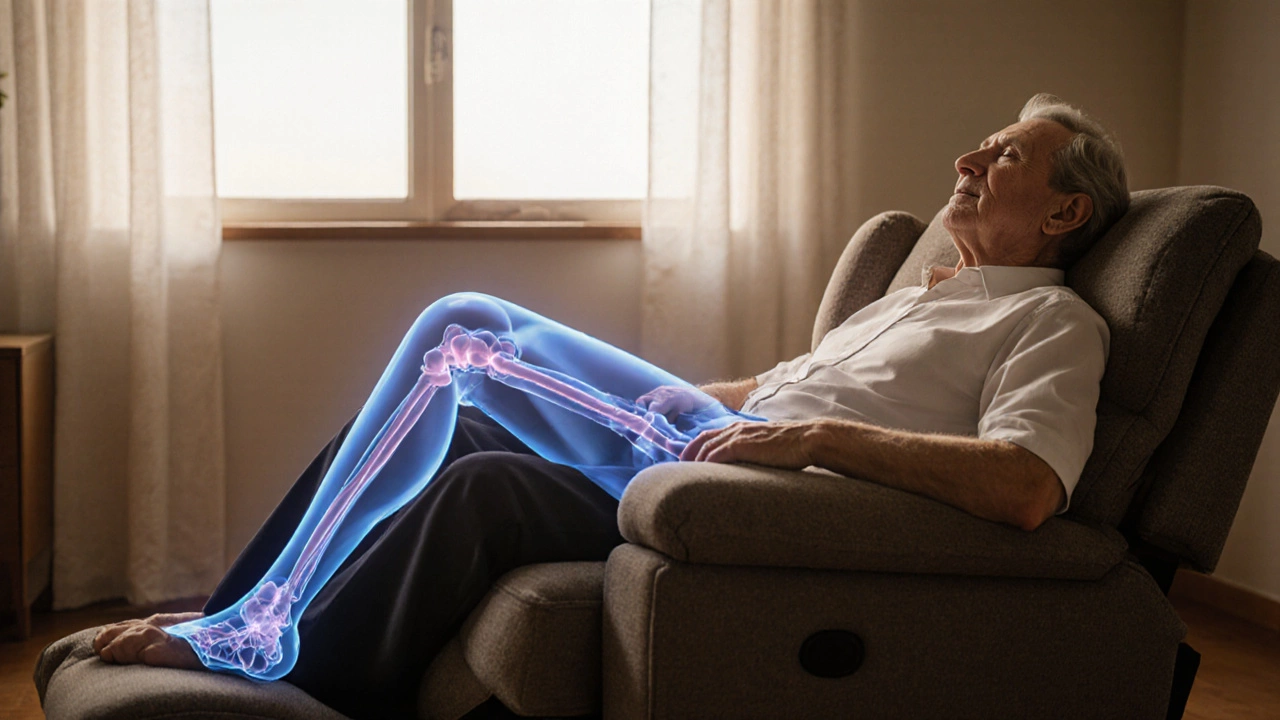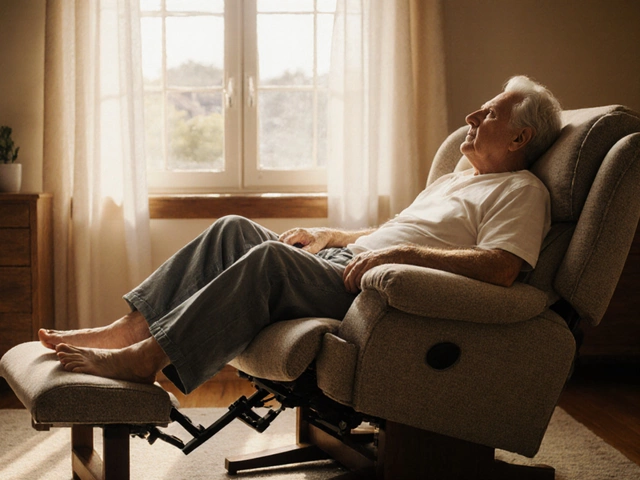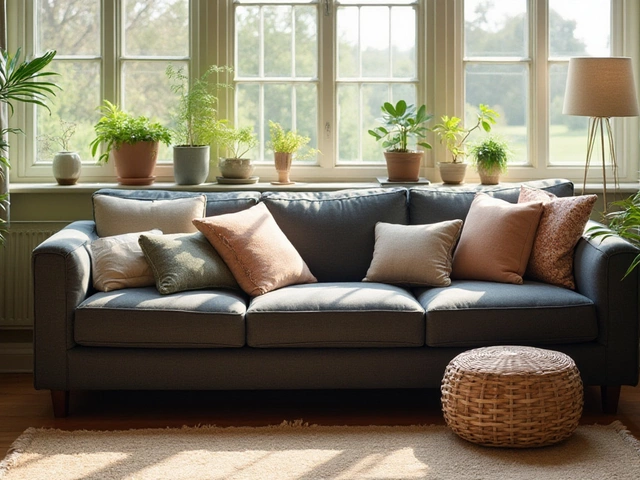Ever notice that after a long session in your favorite recliner you can barely walk after sitting? It’s not just a quirky feeling - it’s your body sending a warning signals about how the chair is treating you. Below we break down what actually happens inside your muscles and joints, why certain recliner designs make the problem worse, and what you can do right now to stay mobile.
What Happens to Your Body When You Sit in a Recliner?
Recliner chair is a type of upholstered seat that tilts backward and often includes an integrated footrest. It is designed for relaxation, but the angle, cushioning, and support can dramatically affect posture, blood flow, and muscle length. When you settle into a deep recline, the hips flex beyond their natural neutral angle, the knees stay bent, and the lower back can slump without proper lumbar support. This posture compresses the Blood circulation the flow of blood through arteries and veins that delivers oxygen and removes waste products from muscles and tissues, especially in the thighs and calves. Reduced circulation means muscles receive less oxygen, leading to a temporary feeling of stiffness once you stand.
At the same time, prolonged sitting shortens the Hip flexors muscles that connect the pelvis to the femur and help lift the knee. When these muscles stay contracted for a long period, they lose elasticity. Standing up forces them to lengthen rapidly, which can cause a pulling sensation in the lower back and hips.
If the recliner lacks adequate Lumbar support a structural element that maintains the natural curve of the lower spine, the spine may flatten, stressing the discs and the Sciatic nerve the longest nerve in the body that runs from the lower back down the leg. Irritation of the sciatic nerve often shows up as tingling, numbness, or weakness when you first try to walk.
Common Reasons You Struggle to Walk After Sitting
- Poor posture: Slouching or overly reclined angles force muscles into unnatural positions.
- Reduced blood flow: Compression of the femoral vein or popliteal vein limits return of blood to the heart.
- Hip‑flexor tightness: Prolonged hip flexion shortens the iliopsoas and rectus femoris.
- Sciatic nerve compression: Lack of lumbar curvature can pinch the nerve root.
- Inactivity: Sitting for more than 30 minutes without moving forces muscles to adopt a low‑activation state.
- Underlying health issues: Arthritis, diabetes, or vascular disease magnify the effect of any sitting posture.
How Recliner Design Influences Mobility
Not all recliners are created equal. The following design elements have a direct impact on the factors listed above:
- Seat angle: A recline angle of 100‑110° keeps the hips close to neutral, reducing hip‑flexor shortening.
- Adjustable footrest height: Matching footrest height to leg length prevents knee flexion beyond 90°, preserving circulation.
- Cushion density: Medium‑firm foam distributes pressure evenly and supports the natural curve of the spine.
- Built‑in lumbar pad or Ergonomic design design principles that align the body’s joints for optimal comfort and health: Keeps the lumbar spine in its lordotic curve.
- Zero‑gravity position: When the chair tilts back to a near‑horizontal position while keeping the legs elevated, the spine experiences neutral pressure and blood flow improves significantly.
Choosing a recliner that incorporates these features can cut the “stiff after sitting” feeling in half.
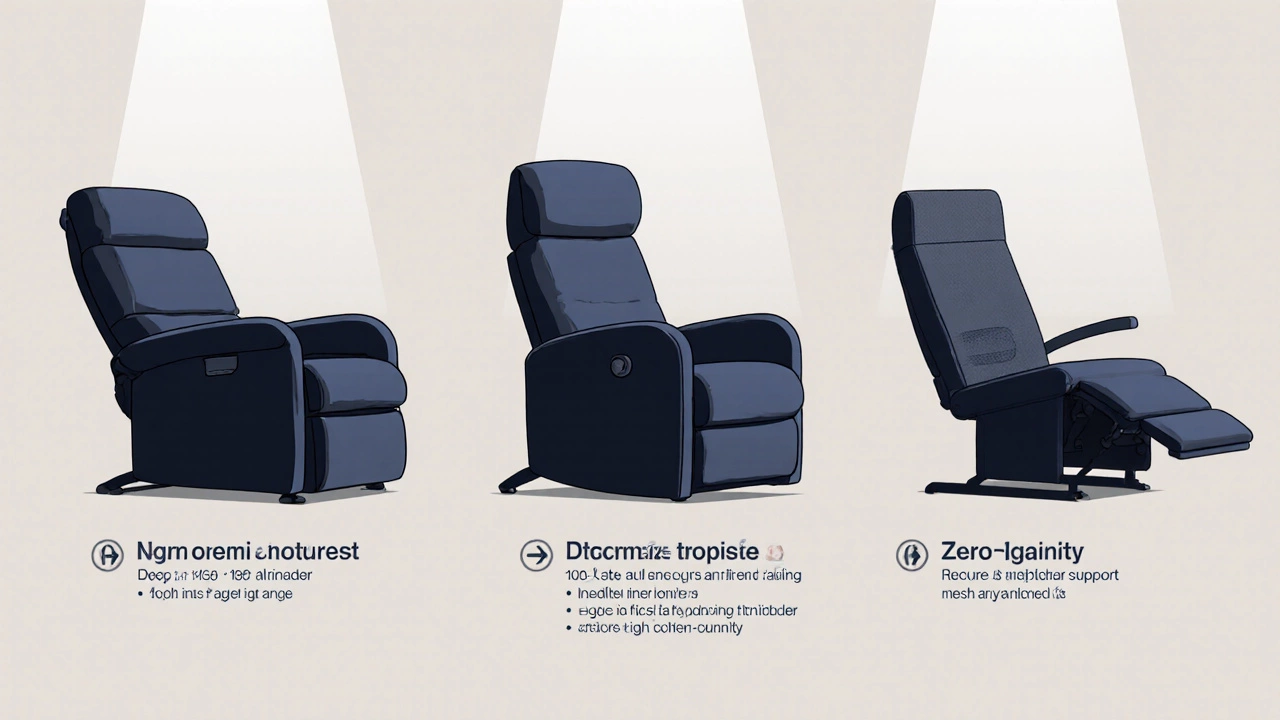
Checklist: Picking a Recliner That Keeps You Moving
- Seat recline between 100°‑110° (not deeper than 120°).
- Adjustable footrest that can be raised to thigh level.
- Integrated lumbar support that matches the curve of your lower back.
- Medium‑firm, breathable upholstery (e.g., high‑density foam with a mesh cover).
- Optional zero‑gravity or “NASA‑style” tilt for enhanced circulation.
- Built‑in lockout mechanism to prevent accidental over‑reclining.
Simple Habits to Stay Mobile While You Relax
Even the best recliner can’t fix a sedentary lifestyle. Pair your chair with small movement tricks:
- Set a timer: Every 30 minutes, stand up, stretch the hamstrings, and walk a few steps.
- Leg pumps: While seated, lift and lower each heel for 10 repetitions to stimulate venous return.
- Hip‑flexor stretch: From a seated position, gently lean forward, keeping the back straight, until you feel a stretch under the front of the hips.
- Use a footrest wedge to keep knees slightly lower than hips, which eases pressure on the lower back.
- Stay hydrated: Adequate fluid intake keeps blood less viscous, supporting circulation.
When to Seek Professional Help
If the stiffness lasts longer than a few minutes, recurs daily, or is accompanied by numbness, tingling, or sharp pain, it’s time to talk to a healthcare provider. Physical therapists can assess your posture, recommend targeted stretches, and suggest ergonomic adjustments. In rare cases, persistent symptoms could signal vascular problems or nerve compression that need medical attention.
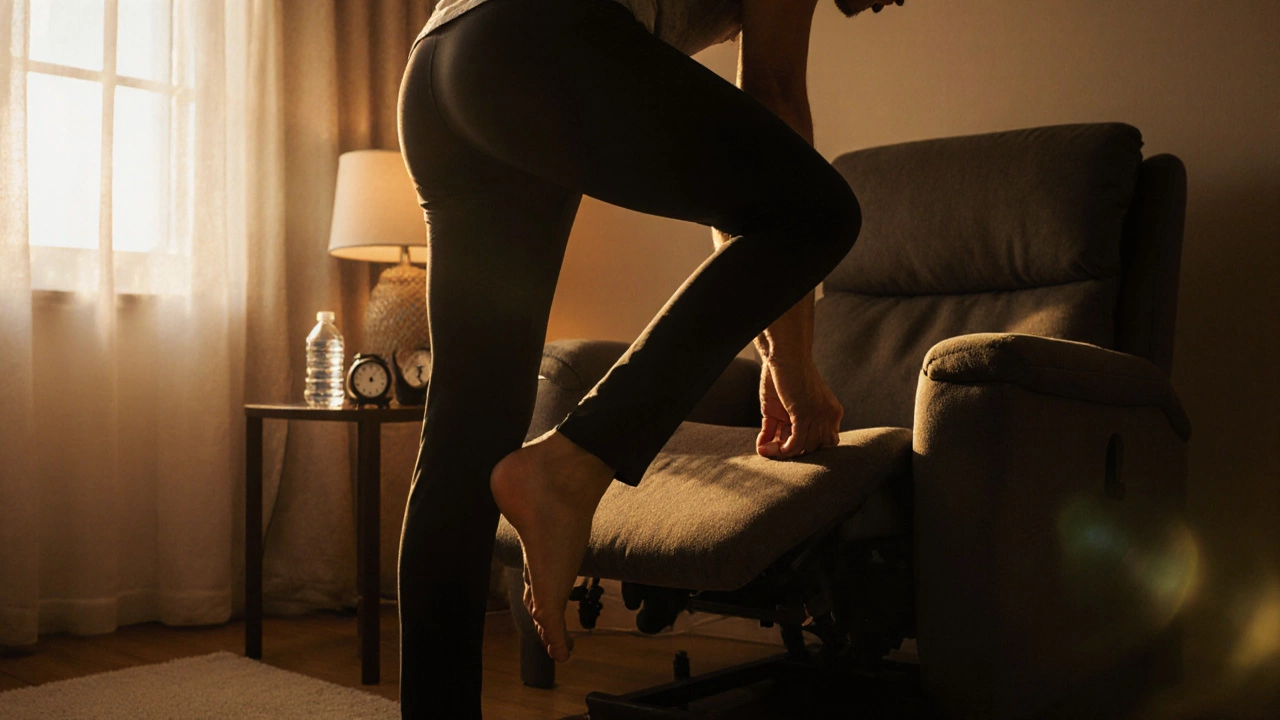
Feature Comparison: Standard vs. Ergonomic vs. Zero‑Gravity Recliners
| Attribute | Standard Recliner | Ergonomic Recliner | Zero‑Gravity Recliner |
|---|---|---|---|
| Recline Angle | 120°‑135° (deep) | 100°‑110° (moderate) | ≈115° with leg elevation |
| Footrest Adjustability | Fixed | Multi‑position | Height‑controlled, incl. leg‑up |
| Lumbar Support | None or cloth pad | Built‑in, adjustable | Integrated, zero‑gravity contour |
| Cushion Density | Soft, low‑density | Medium‑firm, high‑resilience foam | Medium‑firm with breathable mesh |
| Circulation Aid | None | Foot massager (optional) | Leg‑elevation reduces venous pressure |
Notice how ergonomic and zero‑gravity models prioritize neutral hip angles, lumbar alignment, and leg elevation-all the factors that keep you from feeling glued to the floor when you stand up.
Quick Recap
- Deep recline, poor lumbar support, and fixed footrests trap muscles and restrict blood flow.
- Hip‑flexor tightness and sciatic nerve irritation are the main culprits behind the “can’t walk” feeling.
- Choosing a recliner with a moderate recline angle, adjustable footrest, and solid lumbar support can dramatically improve post‑sitting mobility.
- Combine a good chair with simple movement breaks, stretches, and hydration for the best results.
Frequently Asked Questions
Why do my legs feel numb after using a recliner?
Numbness usually means blood isn’t flowing back to the heart efficiently. A deep recline compresses the veins behind the thighs, and a fixed footrest can keep the knees bent past 90°, both of which limit venous return. Adjusting the angle and elevating the legs helps restore circulation.
Can a recliner cause long‑term back problems?
If the chair lacks lumbar support and forces a flattened spine, the intervertebral discs can experience extra pressure over time, potentially accelerating degenerative changes. An ergonomic recliner that maintains the natural lordotic curve reduces that risk.
What stretch works best for hip‑flexor tightness after sitting?
From a seated position, place one foot flat on the floor, keep the other leg extended behind you, and gently tilt your pelvis forward while keeping the back straight. Hold for 20‑30 seconds, then switch sides.
Is a zero‑gravity recliner worth the extra cost?
For people who spend many hours reclining, the zero‑gravity angle can improve circulation and reduce spinal compression, making the higher price worthwhile. If you only use the chair briefly, a well‑designed ergonomic model may be sufficient.
Should I see a doctor if the stiffness lasts more than a few minutes?
Yes, especially if you notice persistent numbness, tingling, or sharp pain. These could signal nerve irritation or vascular issues that need professional assessment.
